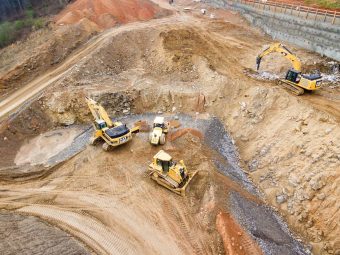
As governments look to transition away from fossil fuels and accelerate the deployment of clean energy, policy makers are dedicating more attention to securing supplies of critical minerals.
Materials such as copper, lithium, nickel, cobalt and rare earth elements are essential to components in many fast-growing clean energy technologies, such as wind turbines and electric vehicles. As demand for them grows, government-to-government partnerships focused on mineral supply are becoming an increasingly popular policy tool, helping establish frameworks of cooperation between producing and consuming countries. However, many of these arrangements are described in broad language without supporting details. By making partnerships more concrete and transparent, governments could send an important signal about how they will ensure that new mining projects are developed responsibly.
Strategic partnerships on critical minerals are often struck between the government of a major consumer market and that of a major critical mineral producing country – such as those between the European Union and the Democratic Republic of Congo and between the United Kingdom and Zambia. There have also been a growing number of partnership announcements between consuming countries, such as the agreement between the United States and Japan.
Thus far, these deals have typically been motivated by economic and national security concerns and ostensibly lay the groundwork for future collaboration or investment incentives. They are rarely binding, but often reference high-level intentions to collaborate on:
- Identifying projects to prioritise for financing.
- Supporting open, competitive markets.
- Building capacity and transferring knowledge through technical assistance programmes.
- Facilitating cooperation on research, development and innovation.
- Developing domestic processing capacity to ensure producing countries can add value to raw materials before they are exported.
Many of these partnership agreements also incorporate or reference a commitment to responsibly and sustainably manage supply chains. Delivering on this promise would require advancing the sustainable development ambitions of low- and middle-income producer countries and mitigating the risk of environmental, social and governance failures, which can cause harm and ultimately lead to supply disruptions. By prioritising transparency, incorporating criteria that require sustainable and responsible practices, and ensuring that affected communities and stakeholders are systematically consulted when negotiating and implementing these partnerships, countries can work together to strengthen secure critical mineral supply chains in a cooperative and responsible manner.
More:
- SWEDEN TO LIFT URANIUM MINING BAN
- THERE WON’T BE ENOUGH LITHIUM FOR EVERYONE – ARE SODIUM-ION BATTERIES THE SOLUTION?
- UNEXPLORED SEABED OF NORWAY: CHALLENGES AND OPPORTUNITIES OF SEA MINING
Enhanced transparency on the content and implementation of strategic partnerships can help build credibility
Government-to-government partnerships on critical minerals raise expectations of new investment, with an increase in funding for projects that embed higher environmental, social and governance standards and support producing countries’ development ambitions. Yet information on the content of partnership agreements, the projects they may support, and the feasibility of such plans is not always publicly disclosed, making it difficult for stakeholders to fully assess the potential benefits and costs.
Research from the Natural Resource Governance Institute found that in about two-thirds of partnerships on critical minerals, no information is disclosed beyond an initial press release. Meanwhile, the strategic partnerships identified by the IEA in its Critical Minerals Policy Tracker are mostly preliminary agreements or Memoranda of Understanding that lack details about follow-up steps and implementation.
More proactive disclosure on the objectives of strategic partnerships, the terms of the agreements and their implementation could help to build credibility among trading partners, industry actors, civil society and the public. This would also align with the global emphasis on improving transparency in the extractive sector, as highlighted in the Extractive Industries Transparency Initiative (EITI) Standard and in industry commitments, such as the one on contract transparency by members of the International Council on Mining and Metals (ICMM). The need for stakeholders to have sufficient transparency is also recognised in certain legislative frameworks, such as the EU Critical Raw Materials Act and the EU Global Gateway Strategy. However, policy makers will need to ensure this is carried forward at the implementation stage.
Read the full text here.
Source: IEA

